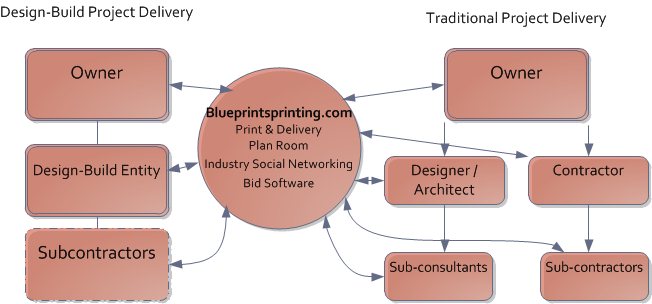The construction, architecture, and engineering industries have changed significantly over the past decade. One of perhaps the most impactful changes shaking up these industries is the shift towards the design-build model of project delivery. Design-build is a relatively new project managment system wherein the design and construction components are considered and calculated concurrently. A design-build team works as a single entity, under a single contract. Design-build contracts reflect a shift in construction contracts towards having the project owner involved before construction even begins on the project. The owner has a single contract with a design-build entity or contractor, and works hand-in-hand with that entity to design and construct their project. The designing and constructing entities are vertically integrated with one another. This integration tends to increase efficiency on projects and gives the owner a single source for information, updates, and a clear place to go to request changes. Finger pointing between contractors and designers is eliminated, and the buck stops with the design-build contractor. Under this new methodology multiple disciplines and subcontractors may have input into the design of a project. The architect/designer is also more likely to put cost saving design elements into the project as he/she is under the same contract with the constructing entity. Design-build also allows for construction on projects to begin before the final design has been completed and approved. Project owners who are on a tight timeline will find many advantages to the design-build model. Design and construction can take place simultaneously throughout the life of the project. There is a lot of information available on the web about the shift to design-build and what it means for architecture, engineering, construction, and trades. For example, Korte has a number of excellent entries on design-build on their blog. The folks over at “the balance” have also written a good piece which outlines the advantages and drawbacks of the design-build model. We encourage our clients to explore the pros and cons and consider how we can help them integrate their teams into a design-build framework…
At blueprintsprinting.com we have many clients that still contract under the traditional design-bid-build model, and many others that have adopted the design-build model. There is no one size fits all in the design and construction industries, and project owners, contractors, and architects all have to take many factors into account when deciding which project model to use. We are designing our plan room software to easily facilitate multiple project completion methodologies. When completed, this software will allow users to share plans and architectural drawings easily with project collaborators and owners, so in many way it will be a natural fit for the design-build model. The industry networking component of blueprintsprinting.com will roll out soon thereafter making finding designers, builders, and subcontractors on platform easy. The accompanying bid software will also allow project owners, architects, and contractors, to share their plans and drawing from our plan room and put the project (or pieces of the project) out for bid. With blueprintsprinting.com account, it will be simple to share plans electronically or to send print hard copies to job sites, offices, and wherever else they are needed. Already many of our clients are enjoying the benefits of being able to send blueprints and specs to multiple project collaborators in multiple locations around the country for a fraction of the cost of local print shops.


Leave a Reply